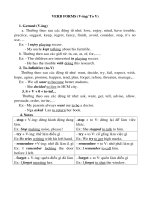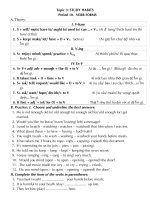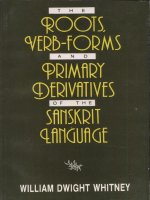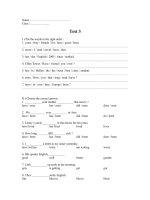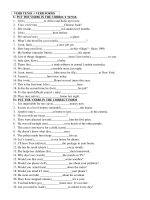Incorrect verb forms
Bạn đang xem bản rút gọn của tài liệu. Xem và tải ngay bản đầy đủ của tài liệu tại đây (9.03 KB, 2 trang )
Incorrect verb forms
ESL students often find it difficult to use the correct verb form when combining with another verb. In English, the
auxiliaries
has, have
and
had
are always used with past participle forms.
Do, does
and
did
are always used with
infinitives. The primary auxiliary
be
(is, am, are, was and were) can be used with both present and past participle
forms.
Study the examples given below.
She
is writing
a book.
She
has written
a book. (NOT She has writing a book.)
Does
she
write
well? (NOT Does she writing well?)
Did
she
come
? (NOT Did she came?)
It is important to know what kind of verbs go with auxiliaries.
It should also be noted that when a verb is used as a noun, it must be in the
–ing form
. In grammars these are
called gerunds.
Active and passive forms are also confused.
Incorrect: I
was very interesting
in the lecture.
Correct: I
was very interested
in the lecture.
Incorrect: We
were questioning
by the police officer.
Correct: We
were questioned
by the police officer.
Incorrect: He
has put
in prison for life.
Correct: He
was put
in prison for life.
Mistakes like these are not surprising because
be
(is, am, are, was and were) is use to make active continuous
forms and passive verb forms.
She
was writing
. (Active – past continuous)
She
was punished.
(Passive – past simple)
Past participles are used to make both passive verb forms and active perfect tenses.
Compare:
She
was asking
. (Past continuous – active)
She
was asked.
(Simple past – passive)
She
has asked
. (Present perfect – active)
Be first to know when grammar rules change! Sign up to our newsletter here: englishgrammar.org (It's free)
Powered by TCPDF (www.tcpdf.org)
